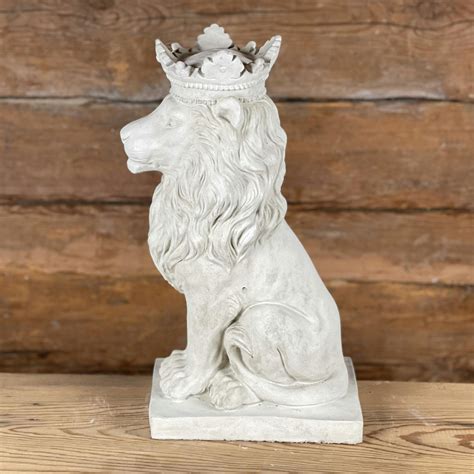betonglejon

Betonglejon: A Comprehensive Guide
Betonglejon, also known as concrete lions, have become an iconic symbol of strength, power, and protection in many cultures around the world. These majestic creatures, often seen guarding entrances to homes, gardens, and public buildings, have captured the imagination for centuries. In this comprehensive guide, we will delve into the fascinating world of betonglejon, exploring their history, cultural significance, and practical uses.
Historical Origins
The origins of betonglejon can be traced back to ancient times. In Assyria, Egypt, and Greece, lions were revered as powerful animals associated with kingship and divine authority. These depictions often featured lions as guardian figures, symbolizing the protection of sacred spaces and the power of the ruling elite.
Cultural Significance
In many cultures, betonglejon have taken on deep cultural significance. In China, lion statues, known as "shi," are believed to bring good fortune and ward off evil spirits. In Japan, the "komainu" lion statues are said to protect temples and shrines from harm. And in Europe, the lion has been a popular heraldic symbol, representing courage, strength, and nobility.
Practical Uses
Beyond their symbolic and cultural value, betonglejon also serve practical purposes. In architecture, they have been used as decorative elements, adding a touch of grandeur and imposing a sense of security. They can also act as architectural features, such as supports for balconies and porches. In public spaces, betonglejon can serve as boundary markers, guiding visitors or restricting access.
Materials and Manufacturing
Today, betonglejon are primarily made of concrete, a durable and versatile material that allows for intricate detailing and large-scale production. The manufacturing process involves creating a mold from a master sculpture, pouring concrete into the mold, and allowing it to cure. Once the concrete has hardened, the mold is removed, revealing the finished betonglejon.
Dimensions and Styles
Betonglejon come in various dimensions, ranging from small tabletop ornaments to colossal statues. The most common sizes are between 1 and 2 meters in height. Styles vary widely, influenced by cultural traditions, architectural trends, and the artists imagination. From realistic representations to abstract interpretations, betonglejon offer an endless array of aesthetic choices.
Pricing and Availability
The cost of a betonglejon varies depending on its size, style, and materials used. Small betonglejon can be purchased for as little as $100, while larger and more elaborate statues can cost thousands of dollars. They are widely available from garden centers, home decor stores, and online retailers.
Installation and Maintenance
Installing a betonglejon is relatively straightforward. Most statues have a flat base that can be placed directly on a surface. However, for larger statues or those in exposed locations, additional reinforcement or anchoring may be necessary. Proper maintenance involves regular cleaning with water and a mild detergent to remove dirt and debris.
Story Case: The Lion of Lucerne
One of the most famous betonglejon in the world is the Lion of Lucerne, a monumental sculpture carved into a rock face in Switzerland. This poignant memorial commemorates the Swiss Guards who were massacred during the French Revolution in 1792. The lion is depicted as mortally wounded, with a broken spear protruding from its back, symbolizing the courage and sacrifice of the fallen soldiers.
Humorous Anecdote: The Lion that Lost its Mane
A humorous story is told about a betonglejon that lost its mane. The statue, which stood proudly in a public park, had been the victim of a mischievous prank. One night, a group of teenagers used a ladder to climb up and remove the lions mane, leaving it looking rather silly and deflated. The next morning, park visitors were greeted by the sight of the mane-less lion, which became a source of laughter and amusement.
Conclusion
Betonglejon, with their rich history, cultural significance, and practical uses, have become an enduring part of our architectural and cultural landscape. Whether they guard sacred spaces, beautify our homes, or mark boundaries, these majestic creatures continue to captivate our imagination and add a touch of grandeur to our surroundings. In the world of betonglejon, we find a testament to the enduring power of art and the timeless allure of these magnificent symbols of strength and protection.
